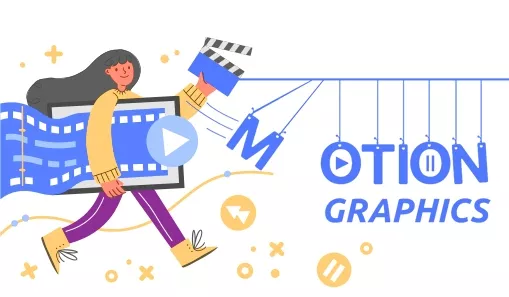Duration : 5 Months / Mode : Part Time
ABOUT MOTION GRAPHICS
Motion graphics refer to digital animations or graphics that incorporate movement to convey information, tell a story, or create visual interest. They are widely used in various media, including films, television shows, advertisements, video games, websites, and social media platforms. Here’s an overview of motion graphics:
Animation Techniques: Motion graphics employ various animation techniques to create movement and visual effects. These techniques may include traditional animation (frame-by-frame animation), 2D animation, 3D animation, motion capture, stop motion, and compositing.
Visual Elements: Motion graphics often include a combination of visual elements such as text, graphics, illustrations, photographs, icons, symbols, shapes, and logos. These elements are animated and manipulated to create dynamic and engaging visuals.
Motion Effects: Motion graphics utilize a wide range of motion effects to animate visual elements and create movement. These effects may include translation (movement in a straight line), rotation (circular movement), scaling (resizing), opacity changes (fading in or out), skewing, morphing, and distortion.
Software Tools: Motion graphics are created using specialized software tools and applications designed for animation and visual effects. Some popular software tools for motion graphics include Adobe After Effects, Adobe Premiere Pro, Autodesk Maya, Cinema 4D, Blender, and Apple Motion.
Applications:
- Film and Television: Motion graphics are widely used in film and television productions for titles, credits, transitions, visual effects, and animated sequences.
- Advertising and Marketing: Motion graphics are employed in advertisements, promotional videos, branding campaigns, and commercials to convey messages, showcase products, and engage audiences.
- Web Design and Digital Media: Motion graphics are integrated into websites, social media content, digital banners, and interactive multimedia projects to enhance user experience and convey information in an engaging manner.
- Educational and Training Materials: Motion graphics are used in educational videos, e-learning modules, training presentations, and instructional materials to simplify complex concepts, illustrate processes, and engage learners.
Storytelling and Communication: Motion graphics are a powerful tool for storytelling and communication, allowing creators to convey ideas, emotions, and narratives through animated visuals and motion effects. They can effectively communicate complex information, evoke emotions, and capture audience attention.
Trends and Styles: Motion graphics encompass a wide range of styles, aesthetics, and trends, ranging from minimalist and abstract designs to vibrant and dynamic animations. Popular motion graphics styles include kinetic typography, infographic animations, explainer videos, character animations, and particle effects.
Overall, motion graphics play a significant role in visual communication and storytelling across various media platforms. They combine animation, design, and technology to create dynamic and engaging visuals that captivate audiences and convey messages effectively.
